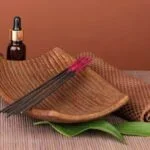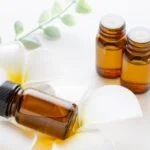Aromatherapy diffusers have become increasingly popular in recent years for their ability to disperse pleasant scents throughout a room. Many people turn to these devices to create a relaxing atmosphere and to benefit from the potential health benefits of essential oils. However, what if there was more to these diffusers than just scent? Can they also serve as humidifiers, helping to improve the air quality in our homes?
In this article, we will delve into the dual functionality of aromatherapy diffusers as humidifiers. We will begin by understanding the basics – defining what exactly aromatherapy diffusers and humidifiers are and how they differ from each other. From there, we will explore the benefits of aromatherapy diffusers in promoting health and well-being through scent, as well as the science behind how humidifiers work to add moisture to the air.
One question that often arises is whether aromatherapy diffusers can effectively fulfill the role of a humidifier. We will debunk this myth and examine whether these devices are capable of adequately moistening a room. Additionally, we will compare the features, functionality, and performance of aromatherapy diffusers and humidifiers to help you make an informed decision about which option best suits your needs.
Whether you’re considering using your aromatherapy diffuser as a humidifier or vice versa, it’s important to understand when each device is most beneficial. We will discuss factors to consider in making this decision so that you can optimize both comfort and wellness in your living space. Finally, we will provide practical tips on maximizing the functionality of your aromatherapy diffuser as a humidifier.
By exploring the potential for dual functionality in aromatherapy diffusers, we hope to unleash their full potential for enhancing both our physical and mental well-being. So let’s dive in and discover how these devices can bring optimal comfort and wellness into our lives.
Understanding the Basics
Aromatherapy diffusers and humidifiers are two popular devices that serve different purposes but share some similarities. It is important to understand the basics of these devices in order to appreciate their individual functionalities and determine if aromatherapy diffusers can effectively work as humidifiers.
Aromatherapy Diffusers
Aromatherapy diffusers are specifically designed to disperse essential oils into the air, filling the room with a pleasant fragrance. These devices often use ultrasonic technology or heat to release the essential oil particles into the air, allowing them to be inhaled and provide therapeutic benefits. Aromatherapy diffusers come in various forms, such as nebulizers, ultrasonic diffusers, evaporative diffusers, and heat diffusers.
Humidifiers
On the other hand, humidifiers are designed primarily for adding moisture to the air in order to improve indoor humidity levels. They help alleviate dryness caused by low humidity, reducing symptoms such as dry skin, irritated eyes, and respiratory problems. Humidifiers work by releasing cool or warm mist into the air through evaporation or ultrasonic technology. There are several types of humidifiers available on the market including cool mist humidifiers, warm mist humidifiers, and ultrasonic humidifiers.
While both aromatherapy diffusers and humidifiers can enhance comfortability in a living space, they have distinct functions. Aromatherapy diffusers focus on dispersing fragrant essential oils for therapeutic purposes while adding a pleasant scent to a room. On the other hand, humidifiers primarily aim at increasing indoor humidity levels for health benefits. Therefore, it is important not to confuse these devices as interchangeable.
Benefits of Aromatherapy Diffusers
Aromatherapy diffusers have gained popularity not only for their pleasant scent but also for their potential health benefits. These devices are specially designed to disperse essential oils into the air, creating a calming and relaxing atmosphere. The benefits of using aromatherapy diffusers extend beyond just scent, as they have been shown to promote overall health and well-being.
One of the main benefits of aromatherapy diffusers is their ability to relieve stress and anxiety. Certain essential oils, such as lavender and chamomile, are known for their soothing properties and can help reduce feelings of stress and promote relaxation. Inhaling these scents can have a direct impact on the limbic system, which is responsible for emotions and memory. This makes aromatherapy diffusers an effective tool for managing stress and promoting a sense of calm.
In addition to stress relief, aromatherapy diffusers can also improve sleep quality. Essential oils like lavender and bergamot have been shown to promote better sleep by helping to regulate sleep patterns and improve overall sleep quality. By creating a peaceful environment with the use of an aromatherapy diffuser, individuals may experience more restful nights and wake up feeling refreshed.
Moreover, certain essential oils used in aromatherapy diffusers have antimicrobial properties that can help purify the air in your surroundings. Oils like tea tree oil, eucalyptus, and peppermint have natural antimicrobial properties that can kill airborne bacteria and viruses. Using an aromatherapy diffuser with these essential oils can help create a cleaner indoor environment and reduce the risk of respiratory infections.
To fully enjoy the benefits of using an aromatherapy diffuser, it is important to choose high-quality essential oils that are safe for inhalation. It is recommended to use pure therapeutic-grade essential oils that do not contain any synthetic additives or fillers.
The Science Behind Humidifiers
Humidifiers play a critical role in maintaining optimal indoor air quality by adding moisture to the air. This section will explore the science behind how humidifiers work and their impact on improving the overall comfort and well-being of individuals.
Understanding Humidity Levels and Indoor Air Quality
Before delving into the science behind humidifiers, it is crucial to understand the concept of humidity levels and its impact on indoor air quality. Humidity refers to the amount of moisture present in the air, and it is typically measured as a percentage.
The ideal range for indoor humidity levels is between 30% to 50%. When humidity levels drop below this range, it can lead to several issues such as dry skin, respiratory problems, increased risk of infections, and even damage to wooden furniture or instruments.
The Mechanism of Humidifiers
Humidifiers work by releasing water vapor into the surrounding environment, thereby increasing humidity levels. There are different types of humidifiers available on the market, including evaporative humidifiers, ultrasonic humidifiers, impeller humidifiers, and steam vaporizers. Each type operates using different mechanisms but with a common goal – to add moisture to the air.
In evaporative humidifiers, water from a reservoir is moved onto a wick or filter using a fan. The airflow helps in evaporating the water particles into fine mist or vapor that then gets released into the room. Ultrasonic humidifiers use high-frequency vibrations to break down water into tiny droplets that are then dispersed through a nebulizer as a cool mist.
Impeller humidifiers use rotating disks that fling water at high speeds against a diffuser mesh, generating a mist that is released into the air. Lastly, steam vaporizers heat water until it reaches boiling point and releases steam.
The Impact on Indoor Air Quality
By increasing moisture levels in the air, humidifiers have a significant impact on improving indoor air quality. Dry air can lead to various health problems, including dry skin and mucous membranes, irritated nasal passages, sore throat, and respiratory issues like asthma or allergies. By adding moisture to the air, humidifiers can help alleviate these symptoms and create a more comfortable living environment.
Additionally, maintaining proper humidity levels can also reduce the risk of respiratory infections and improve sleep quality. Dry air can make individuals more vulnerable to infections, as it can impair the natural defense mechanisms of the respiratory system. Moreover, optimal humidity levels promote better sleep by preventing nasal congestion and dry throat that often disrupt sleep patterns.
Debunking the Myth
A common misconception is that aromatherapy diffusers can effectively humidify a room. However, it’s important to debunk this myth and understand the limitations of aromatherapy diffusers when it comes to adding moisture to the air.
Aromatherapy diffusers are primarily designed to disperse essential oils into the air, allowing users to enjoy their therapeutic benefits through inhalation. They typically use a combination of water and ultrasonic vibrations to create a fine mist that carries the scent of the essential oils. While this mist may create a slight increase in humidity, it is not enough to effectively humidify a room.
On the other hand, humidifiers are specifically designed to add moisture to the air and increase humidity levels in a room. They work by either evaporating water or using a cool mist or warm mist technology to release moisture into the air. Humidifiers are particularly beneficial in dry environments or during winter months when indoor heating can cause low humidity levels.
It’s important to note that using an aromatherapy diffuser as a substitute for a humidifier may have limited effectiveness, especially if you are trying to combat dryness or alleviate respiratory symptoms caused by low humidity. Humidifiers offer more targeted and powerful humidifying capabilities, which can be crucial for individuals with specific health concerns or living in extremely dry climates.
Aromatherapy Diffusers vs Humidifiers
When it comes to enhancing the ambiance of a room and promoting wellness, both aromatherapy diffusers and humidifiers are popular choices. While they may seem similar in function, it’s important to understand the differences between these two devices before making a decision. This section will compare the features, functionality, and performance of aromatherapy diffusers and humidifiers, helping you choose the right one for your needs.
Aromatherapy diffusers are designed to disperse essential oils into the air, creating a pleasant scent that can enhance relaxation, promote better sleep, and relieve stress. Most diffusers use ultrasonic technology to break down the essential oils into microscopic particles that are then dispersed as fine mist or vapor. These devices often come with different settings for controlling the intensity and duration of scent diffusion.
On the other hand, humidifiers are specifically designed to add moisture to the air in order to combat dryness and improve indoor air quality. They release water vapor into the surrounding environment using mechanisms such as evaporation or ultrasonic vibrations. Humidifiers are commonly used during dry winter months or in arid climates to alleviate symptoms related to dry skin, allergies, sinus congestion, and respiratory issues.
| Features | Aromatherapy Diffusers | Humidifiers |
|---|---|---|
| Type | Emit scented mist/vapor | Release water vapor |
| Functionality | Disperse essential oils; can be used without adding water | Add moisture; require water to function |
| Performance | Improve mood, promote relaxation, and enhance overall well-being through scent | Increase humidity levels to relieve dryness and alleviate respiratory symptoms |
While aromatherapy diffusers may have a slight humidifying effect due to the moisture added by essential oils, they are not as effective as dedicated humidifiers. The main purpose of aromatherapy diffusers is to disperse scents and promote relaxation. If you primarily want to improve air quality and alleviate dryness, a humidifier would be a better choice.
It’s worth noting that some devices on the market combine both functions, serving as both an aromatherapy diffuser and a humidifier. These hybrid devices offer the option to switch between functions or use them simultaneously. However, it’s important to carefully read product descriptions and reviews to ensure that the device performs both functions adequately.
Factors to Consider
Aromatherapy diffusers and humidifiers can both provide benefits for ensuring optimal comfort and wellness in your home or workspace. However, there are factors to consider when determining whether to use an aromatherapy diffuser as a humidifier or vice versa.
One important factor to consider is the primary purpose you want to achieve. If your main goal is to improve indoor air quality by adding moisture to the air, then a humidifier would be the best choice. Humidifiers are designed specifically for this purpose and can effectively increase the humidity levels in a room.
On the other hand, if you also want to enjoy the therapeutic benefits of essential oils, then an aromatherapy diffuser would be more suitable. Aromatherapy diffusers disperse essential oils into the air, allowing you to create a relaxing and pleasant ambiance while enjoying the benefits of different scents.
Another factor to consider is the size of the space you want to humidify or fill with scent. Humidifiers are typically designed for larger areas and can cover a significant square footage. They often have larger water tanks and stronger mist output compared to aromatherapy diffusers.
In contrast, aromatherapy diffusers are generally smaller and more compact, making them ideal for personal use or for smaller rooms such as bedrooms or offices. They may not be as effective in providing widespread humidity throughout a large area.
It’s also worth noting that some modern diffusers now come with dual functionality, meaning they can function as both an aromatherapy diffuser and a humidifier. These hybrid devices offer versatility and allow you to switch between functions based on your needs.
| Factor to Consider | Aromatherapy Diffuser as a Humidifier | Humidifier as an Aromatherapy Diffuser |
|---|---|---|
| Primary Purpose | Add moisture to the air while enjoying the benefits of essential oils. | Increase humidity levels in the room without dispersing scents. |
| Size of Space | Ideal for personal use or small rooms like bedrooms or offices. | Suitable for larger areas and can cover significant square footage. |
| Dual Functionality | No, unless using a hybrid diffuser with both humidifying and aromatherapy capabilities. | No, unless using a hybrid humidifier with both humidifying and aromatherapy capabilities. |
Practical Tips
Aromatherapy diffusers can provide more than just pleasant scents; they can also serve as effective humidifiers. To make the most out of this dual functionality, here are some practical tips to maximize the performance of your aromatherapy diffuser as a humidifier.
Choose the Right Essential Oils
One important tip for maximizing the functionality of your aromatherapy diffuser as a humidifier is to choose the right essential oils. Some essential oils are known to have moisturizing properties, such as lavender, geranium, and ylang-ylang. These oils can help increase the humidity in the air when used with your diffuser. Additionally, you can combine these with other essential oils known for their soothing or invigorating effects depending on your preference.
Adjust the Duration and Intensity
To effectively use your aromatherapy diffuser as a humidifier, it is crucial to adjust the duration and intensity of the diffusion based on your needs. Different diffusers have various settings that allow you to control how long and how strong you want it to release mist into the air.
For maximum humidity, longer duration and higher intensity may be required. However, it’s important not to over-do it as excessive use can lead to condensation buildup or excessive moisture in your space.
Consider Room Size and Placement
Room size and placement play a significant role in maximizing the functionality of an aromatherapy diffuser as a humidifier. Larger rooms may require a more powerful diffuser or multiple units strategically placed around the area for optimal coverage. It is also recommended to place the diffuser at an elevated position for better dispersion of mist throughout the room. Avoid placing it near electronic devices or furniture that could potentially be damaged by moisture.
By following these practical tips, you can enhance the effectiveness of your aromatherapy diffuser as a humidifier and create a more comfortable indoor environment. Remember to choose the appropriate essential oils, adjust the settings accordingly, and consider room size and placement to achieve optimal humidity levels. With these tips in mind, you can fully utilize your aromatherapy diffuser as a multifunctional tool for both scent therapy and improved air quality.
Conclusion
In conclusion, aromatherapy diffusers have the potential to function as humidifiers, providing not only a pleasant and relaxing scent but also adding moisture to the air for improved indoor air quality. While they may not be as effective as traditional humidifiers in larger spaces or in cases of severe dryness, aromatherapy diffusers can still offer some benefits in terms of humidification.
It is important to understand that although aromatherapy diffusers can add moisture to the air, they are not designed primarily for this purpose. Their main function is to disperse essential oils into the air, offering therapeutic benefits through scent. However, some models may include features such as misting or adjustable humidity settings that allow them to double as humidifiers.
When deciding whether to use an aromatherapy diffuser as a humidifier, it is essential to consider factors such as the size of the room, intensity of dryness, and individual preferences. If you live in a small space and only require mild humidity improvement, an aromatherapy diffuser can serve your needs adequately. However, if you are dealing with severe dryness or need to humidify large areas, it may be more beneficial to invest in a dedicated humidifier.
Maximizing the functionality of your aromatherapy diffuser as a humidifier can be achieved by following practical tips such as using distilled water, cleaning regularly, and selecting appropriate essential oils that promote respiratory health and moisturization. By taking these steps and understanding the limitations of aromatherapy diffusers compared to traditional humidifiers, you can unleash their potential for optimal comfort and wellness.
In summary, while aromatherapy diffusers are primarily intended for scent therapy purposes rather than thorough humidification, they can still contribute some level of moisture to the surrounding environment. Choosing an aromatherapy diffuser with additional humidifying features and understanding when it’s suitable to use them in place of dedicated humidifiers will help you make the most of their potential. By doing so, you can enhance your comfort and well-being while enjoying the therapeutic benefits of essential oils.
Frequently Asked Questions
Can I turn my diffuser into a humidifier?
While a diffuser and a humidifier may have some similarities in how they distribute moisture into the air, they serve different purposes. A diffuser is primarily designed to disperse essential oils by breaking them down into smaller molecules and releasing them into the air.
On the other hand, a humidifier is specifically created to add moisture to the air and increase humidity levels. Although it may be tempting to try turning your diffuser into a makeshift humidifier, it is not recommended as it may not effectively provide enough moisture for humidifying a room or space.
How can I make my air humid without a humidifier?
If you don’t have a humidifier but still want to increase the humidity in your home or room, there are several methods you can try. One option is to place bowls of water around your living space or hang damp towels or clothing indoors for evaporation purposes. These can help introduce moisture into the air slowly over time.
Another alternative is to use a spray bottle filled with water and mist it into the air periodically throughout the day. Additionally, keeping plants that require higher humidity levels can also assist in increasing the moisture content within a room naturally.
Do diffusers help with colds?
Diffusers may offer some relief when it comes to cold symptoms, but their effectiveness ultimately depends on what ingredients are used in conjunction with them. Some essential oils like eucalyptus, peppermint, or tea tree oil have properties that can help alleviate congestion and ease breathing discomfort associated with colds. When these oils are diffused into the air, they can potentially provide temporary relief from nasal congestion and other related symptoms.
However, it’s important to note that while essential oils might offer some comfort during a cold, they cannot cure or completely eliminate cold symptoms on their own. It is always best to consult with a healthcare professional when dealing with severe cold symptoms or prolonged illness.

Are you looking for a natural way to improve your health and wellbeing?
If so, aromatherapy may be the answer for you.





